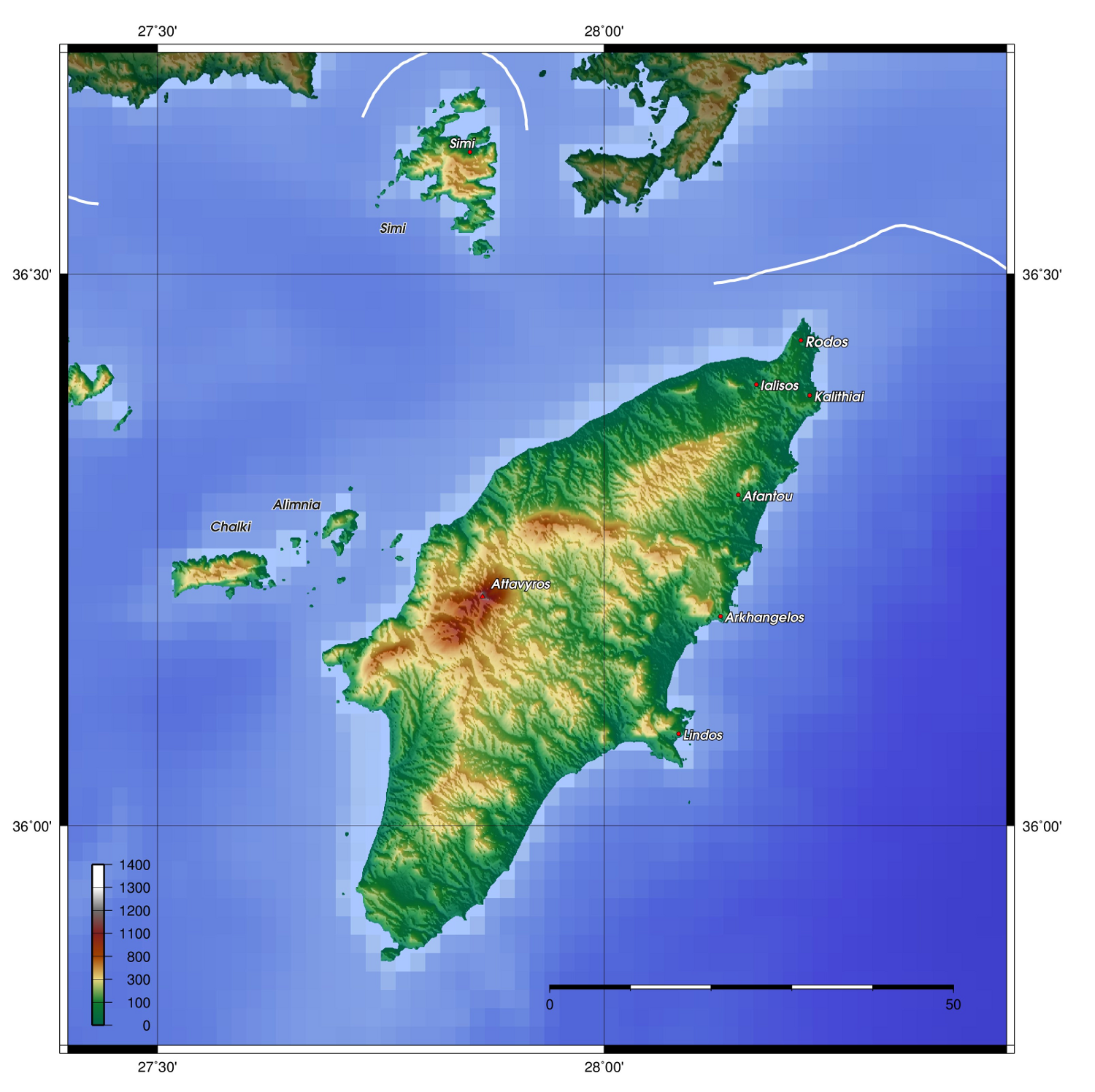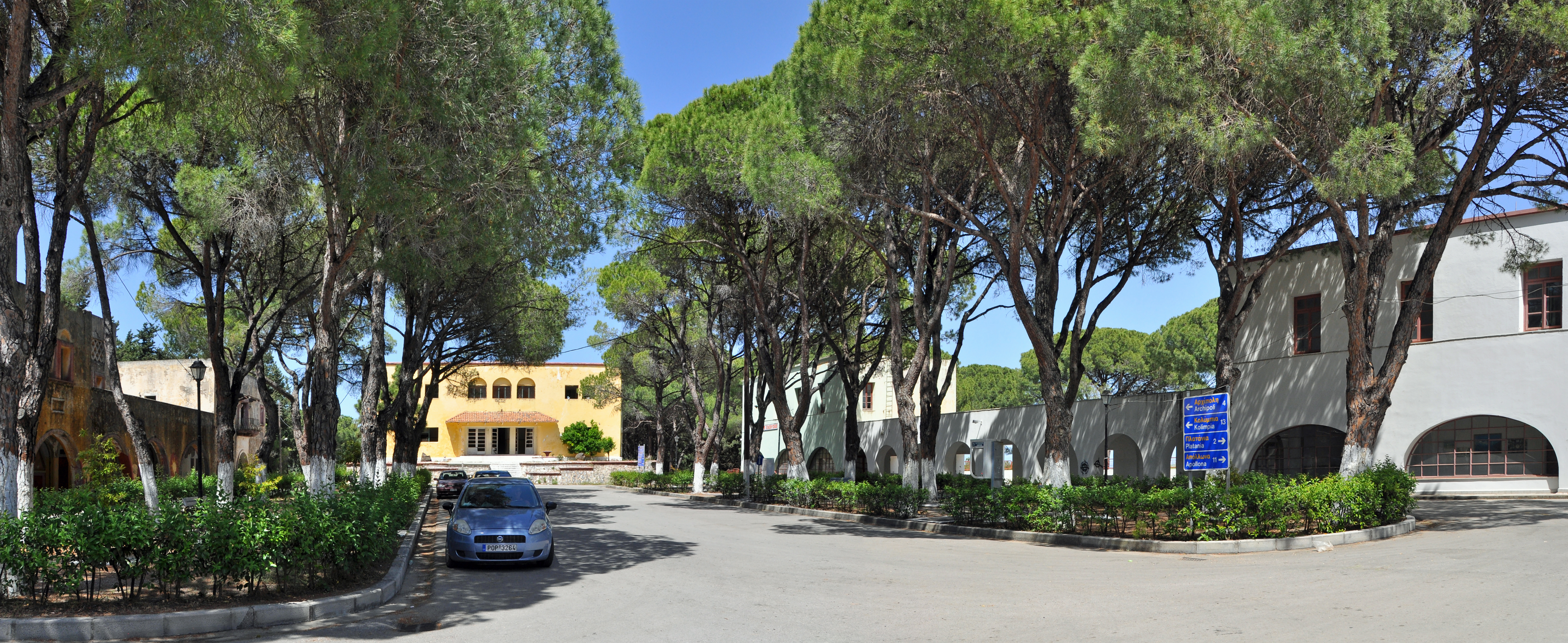Profitis Ilias (Rhodes) on:
[Wikipedia]
[Google]
[Amazon]
 Mount Profitis Ilias is a mountain on the Greek island of
Mount Profitis Ilias is a mountain on the Greek island of
File:ProfitasIliasSensuLato.JPG,
File:Comperia comperiana.jpg, ''Himantoglossum comperianum''
 Near the summit and 8 km from Eleousa are Hotel "Elaphos and Elaphina" and the
Near the summit and 8 km from Eleousa are Hotel "Elaphos and Elaphina" and the
File:MussoliniHouseRodos.JPG, Mussolini's House
File:MussoliniHouseRodos (6).JPG,


Mediterranean Black Sea Flyway
{{coord, 36.2724, 27.9331, display=title Rhodes Mountains of Greece Landforms of Rhodes (regional unit) Mountains of the South Aegean
 Mount Profitis Ilias is a mountain on the Greek island of
Mount Profitis Ilias is a mountain on the Greek island of Rhodes
Rhodes (; el, Ρόδος , translit=Ródos ) is the largest and the historical capital of the Dodecanese islands of Greece. Administratively, the island forms a separate municipality within the Rhodes regional unit, which is part of the S ...
. It is named for the biblical Elijah
Elijah ( ; he, אֵלִיָּהוּ, ʾĒlīyyāhū, meaning "My El (deity), God is Yahweh/YHWH"; Greek form: Elias, ''Elías''; syr, ܐܸܠܝܼܵܐ, ''Elyāe''; Arabic language, Arabic: إلياس or إليا, ''Ilyās'' or ''Ilyā''. ) w ...
.
Geology
Profitis Ilias is formed of uplifted fault blocks themselves a product of the Hellenide orogeny which produced a stack of Alpinenappe
In geology, a nappe or thrust sheet is a large sheetlike body of rock that has been moved more than or above a thrust fault from its original position. Nappes form in compressional tectonic settings like continental collision zones or on the o ...
s of Mesozoic
The Mesozoic Era ( ), also called the Age of Reptiles, the Age of Conifers, and colloquially as the Age of the Dinosaurs is the second-to-last era of Earth's geological history, lasting from about , comprising the Triassic, Jurassic and Cretace ...
age. These are part of the Pindos-Olonos series of low-grade metamorphic limestone sediments. The mountain overlooks Middle Miocene
The Miocene ( ) is the first epoch (geology), geological epoch of the Neogene Period and extends from about (Ma). The Miocene was named by Scottish geologist Charles Lyell; the name comes from the Greek words (', "less") and (', "new") and mea ...
-Pleistocene
The Pleistocene ( , often referred to as the ''Ice age'') is the geological epoch that lasted from about 2,580,000 to 11,700 years ago, spanning the Earth's most recent period of repeated glaciations. Before a change was finally confirmed in ...
sedimentary basins. Sudden topographic variations and land instabilities are due to a multitude of thrust fault
A thrust fault is a break in the Earth's crust, across which older rocks are pushed above younger rocks.
Thrust geometry and nomenclature
Reverse faults
A thrust fault is a type of reverse fault that has a dip of 45 degrees or less.
If ...
s. Ophiolite
An ophiolite is a section of Earth's oceanic crust and the underlying upper mantle that has been uplifted and exposed above sea level and often emplaced onto continental crustal rocks.
The Greek word ὄφις, ''ophis'' (''snake'') is found ...
s, usually gabbro
Gabbro () is a phaneritic (coarse-grained), mafic intrusive igneous rock formed from the slow cooling of magnesium-rich and iron-rich magma into a holocrystalline mass deep beneath the Earth's surface. Slow-cooling, coarse-grained gabbro is ch ...
occur.
Fault-line
In geology, a fault is a Fracture (geology), planar fracture or discontinuity in a volume of Rock (geology), rock across which there has been significant displacement as a result of rock-mass movements. Large faults within Earth's crust (geolo ...
cliff on Profitis Ilias. In the foreground are friable rocks of Middle Miocene-Pleistocene age.
File:ProfitisIliasLimestone.JPG, Fractured tectonic limestone by the path to Salakos. Middle Miocene-Pleistocene sediments on the plain below.
File:NatureMuseumPetaloudesGeology (4).JPG, Tectonic limestone on display at Nature Museum Petaloudes
Petaloudes ( el, Πεταλούδες) is a former municipality on the island of Rhodes, in the Dodecanese, Greece. Since the 2011 local government reform it is part of the municipality Rhodes, of which it is a municipal unit. Its population was 1 ...
Botany
Profitis Ilias is covered with forests of pines (''Pinus brutia
''Pinus brutia'', commonly known as the Turkish pine, is a species of pine native to the eastern Mediterranean region. The bulk of its range is in Turkey.
Turkish pine is also known by several other common names: Calabrian pine (from a naturali ...
'') and cypress ('' Cupressus sempervirens'') and maquis shrubland. Notable are the Rhodes Paeony '' Paonia rhodia'' and '' Cyclamen rhodium''. The large parasitic orchid '' Limodorum abortivum'' grows in the pinewoods. Also notable are '' Ophrys ferrum-equinum'', the Profitis Ilias Bee Orchid '' Ophrys fuciflora'' ssp. ''oreas'' (found only here), '' Ophrys arachnites'' ssp. ''attica'', '' Ophrys lutea'', '' Ophrys oestrifera'' ssp. dodekanensis, ''Orchis italica
''Orchis italica'', the naked man orchid or the Italian orchid, is a species of orchid native to the Mediterranean Basin. It gets its common name from the lobed lip (labellum) of each flower which mimics the general shape of a naked man. In Ital ...
'', ''Cephalanthera longifolia
''Cephalanthera longifolia'', the narrow-leaved helleborine, sword-leaved helleborine or long-leaved helleborine, is a rhizomatous herbaceous perennial plant in the family Orchidaceae. It is native to light woodland, and widespread across Europ ...
'', '' Orchis provincialis'' (high altitudes moist woodland Prophitas Ilias only)
Zoology
In Spring and Autumn many pasage migrants occur. Rare snakes include leopard snake and Dahl's whip snake. TheMediterranean house gecko
The Mediterranean house gecko (''Hemidactylus turcicus'') is a species of house gecko common to the Mediterranean area which has spread to many parts of the world. It is commonly referred to as the Turkish gecko as represented in its Latin name ...
is more common.
History
Byzantine
The Byzantine Empire, also referred to as the Eastern Roman Empire or Byzantium, was the continuation of the Roman Empire primarily in its eastern provinces during Late Antiquity and the Middle Ages, when its capital city was Constantinopl ...
monastery named "Prophetes Elias". There are two hotel buildings, a three-storeyed one, "Elaphos" (now restored and functional) and a two-storeyed one, the "Elaphina.
The "Elaphos" hotel was built by the Italian colonists in the Dodecanese in 1929 as Albergo del Cervo (Deer Hotel) In 1930, a ground floor restaurant, a large veranda, a tennis court and a dancing floor were added. Later, the second floor was constructed (replacing the veranda). In 1932 the building was extended with a new wing, called "Elaphina". The hotel was named after the deer ''Dama dama
The European fallow deer (''Dama dama''), also known as the common fallow deer or simply fallow deer, is a species of ruminant mammal belonging to the family Cervidae. It is historically native to Turkey and possibly the Italian Peninsula, Bal ...
'' ''platoni'' that lives in the adjacent woods.
Mussolini's House
This villa was the summer residence of GeneralCesare Maria De Vecchi
Cesare Maria De Vecchi, 1st Conte di Val Cismon (14 November 1884 – 23 June 1959) was an Italian soldier, colonial administrator and Fascist politician.
Biography
De Vecchi was born in Casale Monferrato on 14 November 1884. After graduating ...
, Italian Governor of Rhodes between 1936–1940. It is opposite to and overlooks the Hotel "Elaphos and Elaphina", amongst trees on the hill behind the taverna. It was intended as a retirement home for Benito Mussolini.

Eleousa
8 km from the hotel Elaphos is the village of Eleousa founded as Profitis Ilias-Campochiaro. During their occupation of Rhodes the Italians built four agricultural villages that were to be populated by Italian settlers. Three of them stood not far from the coast: San Benedetto (Kolymbia), San Marco (near Kattavia) and Peveragno (Kato Kalamata). Profitis Ilias-Campochiaro lay more inland. The settlers each received a house and a plot of land. Those at the montane Profitis Ilias-Campochiaro came from the Trentino-Alto Adige /Südtirol. Profitis Ilias-Campochiaro (Eleousa) dates back to 1935–1936. The village was constructed with a Roman Catholic church (now Greek Orthodox) a school, shops, a Casa del Fascio (formerly with a tower), municipal services, medical facilities and a cinema. All these buildings were (and are) grouped around a rectangular town square. Hydraulic works were also carried out, to allow irrigation and hydroelectric power generation. The round pond with fountain just outside the village is a part of this system.
Agios Nikolaos Foundoukli
Agios Nikolaos Foundoukli lateByzantine
The Byzantine Empire, also referred to as the Eastern Roman Empire or Byzantium, was the continuation of the Roman Empire primarily in its eastern provinces during Late Antiquity and the Middle Ages, when its capital city was Constantinopl ...
church dedicated to St Nicholas containing 15th century frescoes. It is 2 km. from Eleousa. Around the church are very old olive and Oriental plane
''Platanus orientalis'', the Old World sycamore or Oriental plane, is a large, deciduous tree of the Platanaceae family, growing to or more, and known for its longevity and spreading crown. In autumn its deep green leaves may change to blood red ...
trees.
See also
* Mount Attavyros * Natural history of Rhodes * SalakosReferences
External links
Mediterranean Black Sea Flyway
{{coord, 36.2724, 27.9331, display=title Rhodes Mountains of Greece Landforms of Rhodes (regional unit) Mountains of the South Aegean